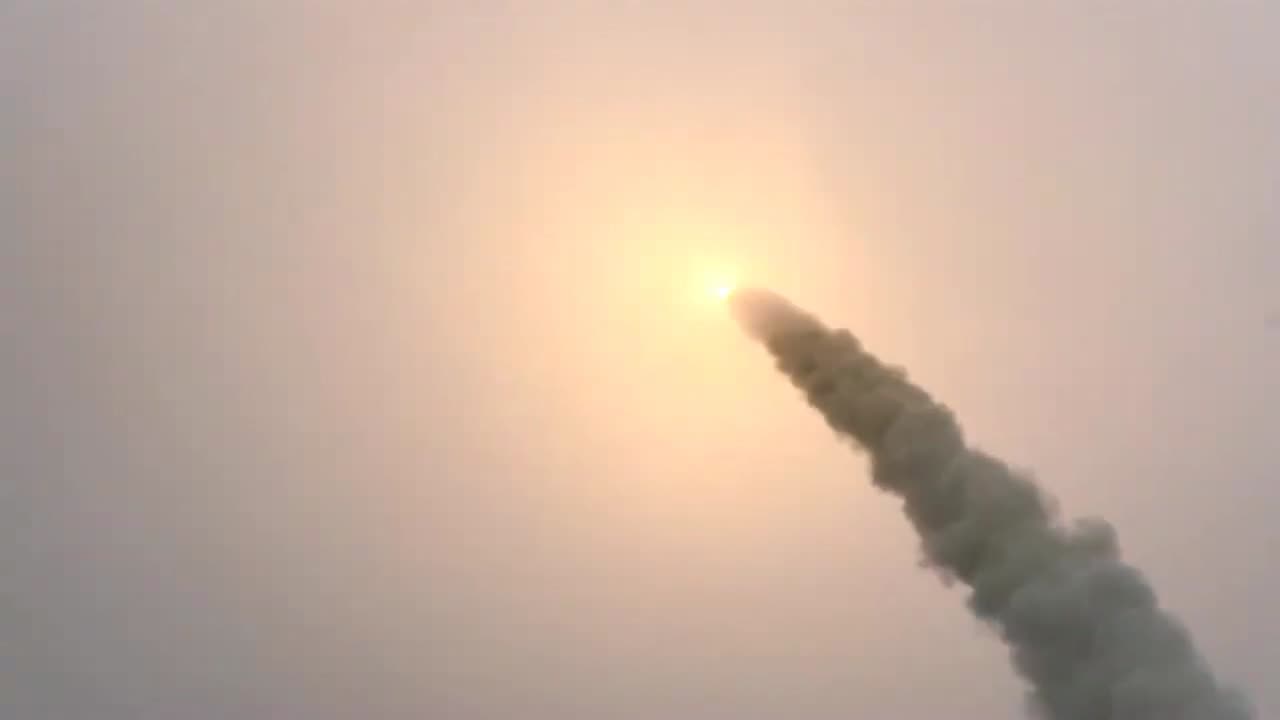Premium Only Content

S-400 TRIUMF AND S-500 PROMETHEUS - RAW VIDEO !!!!
The S-400 Triumf (Russian: C-400 Триумф – Triumf; translation: Triumph; NATO reporting name: SA-21 Growler), previously known as the S-300 PMU-3, is a mobile, surface-to-air missile (SAM) system developed in the 1990s by Russia's NPO Almaz as an upgrade to the S-300 family. The S-400 went into service on 28 April 2007. The first battalion of the newest surface-to-air missile systems assumed combat duty on 6 August.
The development of the S-400 system began in the late 1980s and was announced by the Russian Air Force in January 1993. On 12 February 1999 successful tests were reported at Kapustin Yar in Astrakhan, and the S-400 was scheduled for deployment by the Russian army in 2001. Dr. Alexander Lemanskiy of Almaz-Antey was the Chief Engineer on the S-400 project.
In 2003, it became apparent that the system was not ready for deployment. In August, two high-ranking military officials expressed concern that the S-400 was being tested with "obsolete" interceptors from the S-300P system and concluded that it was not ready for deployment. The completion of the project was announced in February 2004. In April, a ballistic missile was successfully intercepted in a test of the upgraded 48N6DM missile. In 2007, the system was approved for service. Russia had accepted for service the 40N6 long-range missile for the S-400 air-defence system, a source in the domestic defense industry told TASS news agency in October 2018.
The S-400 Triumf and Pantsir missile system can be integrated into a two-layer defense system.
The S-500 Prometey (Russian: C-500 Прометей, lit. 'Prometheus'), also known as 55R6M "Triumfator-M", is a Russian hypersonic surface-to-air missile/anti-ballistic missile system replacing the A-135 missile system currently in use, and supplementing the S-400. The S-500 was developed by the Almaz-Antey Air Defence Concern. Initially planned to be in production by 2014, the first unit entered service in 2021 with the 15th Air Army.
Although sharing a similar designation with the S-500U project of the late 1960s, the relationship between the two remains unclear. The S-500U multichannel anti-aircraft system was a 1968 initiative by the Soviet Air Defence Forces, Soviet Navy, Ministry of the Radio Industry (Ministerstvo Radio Promyshlennosti SSSR), and Ministry of the Shipbuilding Industry to create a unified complex for the National Air Defence Troops, navy and ground troops. Missiles of the S-500U complex were supposed to engage enemy aircraft at a range up to 100 km (62 mi). The S-500U SAM complex project was rejected by the Soviet Army, which had a requirement to engage not only enemy aircraft, but also short-range ballistic missiles. Consequently, the S-300 family (SA-10 and SA-12) was developed instead.
According to the original plans, ten S-500 battalions were to be purchased for the Russian Aerospace Defense (VKO) under the State Armament Programme 2020 (GPV-2020).
The S-500s will work in parallel with S-400s and together are planned to replace the S-300 missile systems. The first units are planned to be deployed around the Moscow oblast and the country's central area. A naval version is the likely armament for the new Lider-class destroyer, which was to enter service after 2020 but is not operational as of 2022.
CEO of Rostec Corporation Sergey Chemezov declared the beginning of S-500 production on 30 June 2019. Despite that, serial production of the first 10 systems (ordered in late 2020) only begun in 2021.
In summer 2020 Sergei Surovikin, the commander of the Aerospace Forces, seemed to confirm that the S-500 system can be used to kill satellites.
A new contract was signed in August 2022.
source text : wikipedia.org
link : https://en.wikipedia.org/wiki/S-400_missile_system
https://en.wikipedia.org/wiki/S-500_missile_system
-
 LIVE
LIVE
Vigilant News Network
14 hours agoBill Gates’ New Bioterror Project Exposed | Media Blackout
1,699 watching -
 7:56:34
7:56:34
Barry Cunningham
1 day agoWATCH LIVE: TRUMP INAUGURATION MAKE AMERICA GREAT AGAIN VICTORY RALLY - 1 DAY TO GO!!
91.7K64 -
 8:36
8:36
China Uncensored
17 hours agoIs China’s EV Industry Collapsing?
219K126 -
 4:17:00
4:17:00
Tundra Tactical
1 day ago $30.02 earnedSHOT SHOW 2025!!!!!! Whats Are We Looking Forward To Most
277K35 -
 22:53
22:53
Film Threat
1 day agoA TRIBUTE TO VISIONARY DIRECTOR DAVID LYNCH | Film Threat News
124K9 -
 20:30
20:30
Exploring With Nug
1 day ago $8.05 earnedMissing Father of 2 FOUND Underwater In Shallow Pond!
97K15 -
 19:19
19:19
This Bahamian Gyal
1 day agoThe View PRAISES Michelle Obama for DITCHING TRUMP inauguration, "when they go LOW, go even LOWER"
79.3K79 -
 14:25
14:25
Degenerate Jay
1 day ago $9.19 earnedThe Flash Movie Failed Because People Hate The Character? Sure.
163K26 -
 28:30
28:30
CharLee Simons Presents Do Not Talk
6 days agoSam Anthony from YourNews.com (with host CharLee Simons)
98.7K4 -
 52:34
52:34
PMG
1 day ago $6.01 earnedHannah Faulkner and Steve Friend | EXPOSE THE FBI CORRUPTION - KASH PATEL
72.5K9